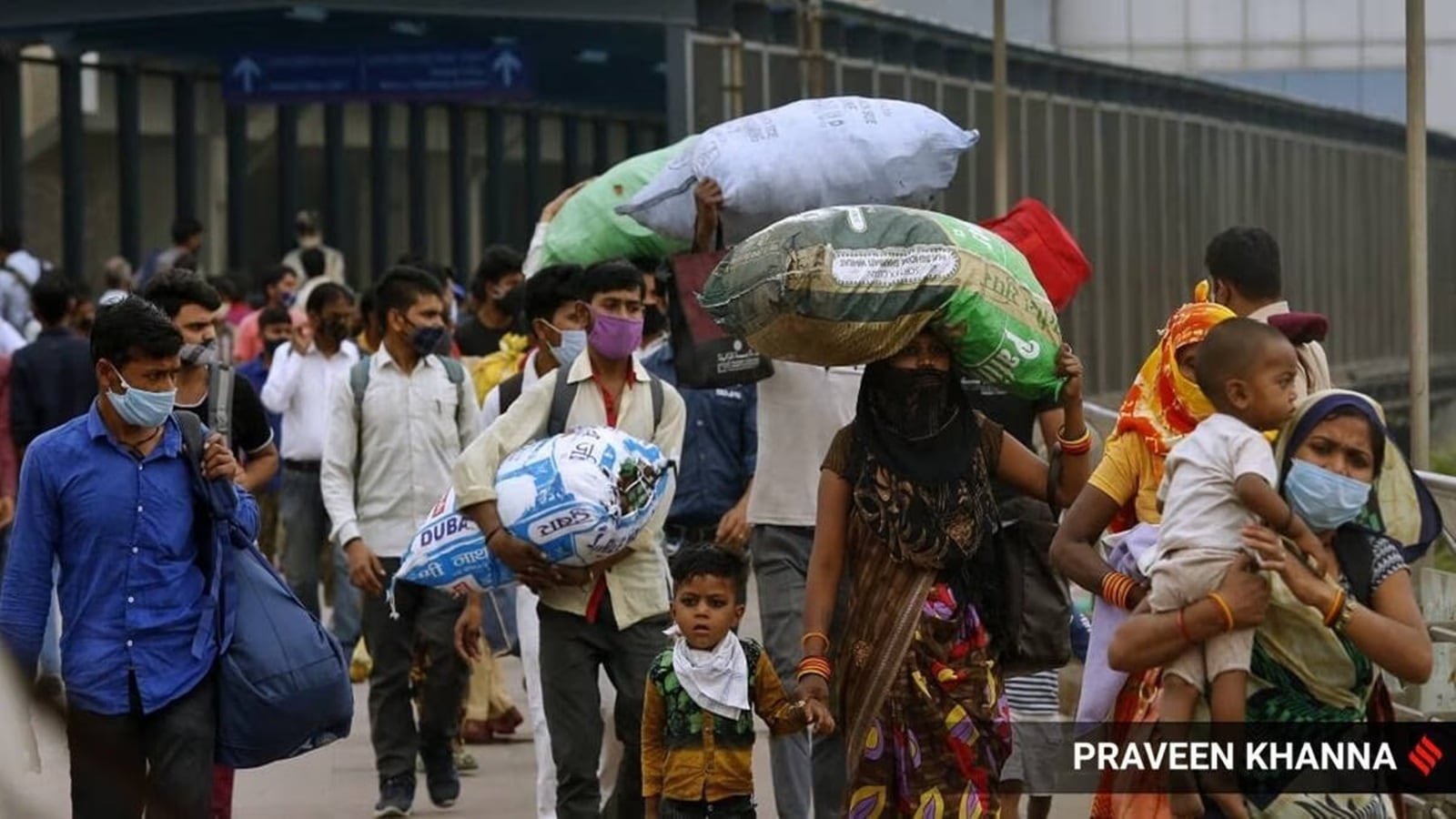MORE THAN a third of Bihar’s families live on around Rs 200 a day, among the Scheduled Castes that number stands as high as 43.93%; only 7% of its population are graduates; and about 96% have no vehicles.
These are some of the highlights of the Bihar caste survey report, tabled in both Houses of the state on Tuesday. The caste survey was conducted between January and August this year, and its initial report was released last month, showing that Extremely Backward Classes (EBCs) formed the biggest social bloc in the state.

On Tuesday, the detailed report, with the educational and economic status of each caste and social group, was tabled. Its findings, indicating the extent of the backwardness in the state, might sharpen calls for increased quota for OBC groups.
Bihar Chief Minister Nitish Kumar described the report as a “landmark”, which would pave the way for “inclusive growth”. He said its findings, showing that the EBC and OBC population together stood at 63%, were a clear sign that the Centre should raise the overall reservation ceiling from 50% to 65%.
As per the caste survey report, the state is home to about 2.97 crore families, of which more than 94 lakh (34.13%) live on Rs 6,000 or less a month – the cut-off for below poverty line in Bihar.
Poverty is highest among the SCs, with 43.93% families qualifying as BPL, while among the EBCs, the number is 33.58%. The OBCs are only marginally better, with 33.16% of the families earning less than Rs 6,000 a month. Even in the general category, a quarter of the population, 25.09%, falls in this category.
In comparison, among the Muslims, the share of poor is at 17.26%.
Story continues below this ad
ExplainedThe poverty pointers
Among the SC families, more than half of the Mushahars (54.56%) and Doms (53.10%) are poor. Only 5% of the SC families earn between Rs 20,000 and Rs 50,000, and just 1% above Rs 50,000 per month.
Over 14% of the people in the state live in kuchcha houses, of whom about 15% live in huts and another 26% in tin-shed houses.
Those who have studied till Class 8 comprise over 37% of Bihar’s population; of them, 22.67% have studied only up to Class 5. Another 14.71% have studied till Class 10, meaning that more than half the state’s population (about 52%) has studied till Class 10 or below it.
Those who have studied till Class 11 account for 9.19%, while those who have cleared Class 12 are over 7%.
Among the OBCs, 3.11% and, among the Yadavs, 1.55% are in government jobs. The Yadavs are the single largest group in the state, at 14.3 per cent. The Banias have slightly higher representation in government jobs, at 1.96%.
Story continues below this ad
Addressing the Assembly, Nitish said that with the poor among the upper castes already getting 10%, a hike in the overall quota ceiling would take the total to 75%. “I back this.”
Nitish also played on the contradictions between the state and central BJP on the matter, turning to the party benches and saying: “It is good that you are supporting us on this.”
With the Opposition making the demand for a caste census the crux of its poll campaign, the central BJP has played it safe on the issue. But given the state compulsions, the Bihar unit of the party was part of the unanimous vote in the Assembly seeking a caste census.
On Tuesday, senior BJP leader Nand Kishore Yadav told the Assembly: “If there is any proposal to increase quota, we are in favour of it.”
Story continues below this ad
A few days ago, while addressing a meeting in Bihar, Union Home Minister Amit Shah accused the Mahagathbandhan government of exaggerating Muslim and Yadav numbers.
Among the OBCs, while a third of the families are poor overall, 35.87% of the Yadav families are poor, while for the Kushwahas and Kurmis, the share is 34.22% and 29.62%. Among the Banias, the poverty percentage is 24.62.
Of the 67% OBC families above poverty line, 29% earn between Rs 6,000 and Rs 10,000 per month; 18% between Rs 10,000 and Rs 20,000; 10% between Rs 20,000 and Rs 50,000; and about 4% make above Rs 50,000 per month.
Among the EBCs, the share of the poor is 34.56%. While 29.87% of the Telis are poor, the figure is 32.99% for Kanus, 34.75% for Dhanuks, and 35.88% for Nonias. Among the Chandravanshis and Nais, 34.08% and 38.37%, respectively, are poor.
Story continues below this ad
Of the EBC families, 32% earn between Rs 6,000 and Rs 10,000; 18% between Rs 10,000 and Rs 20,000; and only 2% above Rs 50,000 per month.
Among the SCs, more than half the population of the Mushahars (54.56%) and Doms (53.10%) are poor. The Nats follow closely at 49.06%. Besides, 42.06% of the Chamars, 39.36% of the Dusadhs and 38.34% of the Pasis are in the BPL category.
Only 5% of the SCs earn between Rs 20,000 and Rs 50,000, and just 1% above Rs 50,000 per month.
Among the upper castes, the Bhumihars record the maximum poverty (27.58%), followed by the Brahmins (25.3%), the Rajputs (24.89%) and Kayasthas (13.83%).
In the general category, 9% earn above Rs 50,000.
Story continues below this ad
Compared to other groups, much higher numbers among the upper castes are in government jobs – with 6.68% of Kayasthas, 4.99% of Bhumihars, 3.81% of Rajputs and 3.60% of Brahmins among them.
Among the Muslims, 2.5% of the Saiyads are in government jobs.
Just over a quarter of Bihar (26.76%) lives in pucca houses of two or more rooms, while nearly the same number (22.37%) live in one-room pucca houses. Families living in tin-shed houses account for another quarter (25.54%). About 0.24% of people have no houses.
While 95.49% people have no vehicles, 3.8% have two-wheelers, and just 0.44% own four-wheelers.
Story continues below this ad
They survey also says that 1.22% of Bihar’s people work and 0.39% study outside the state.









